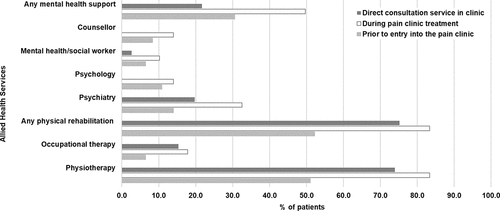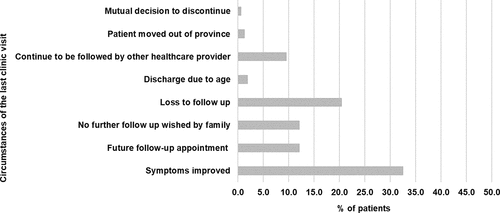Figures & data
Table 1. Referrer specialties.
Table 2. Patient demographics and disease characteristics at baseline.
Table 3. Individual factors of the biopsychosocial model of pain (N = 157).
Figure 1. Allied health services: Proportion of patients receiving allied health services prior to entry and during treatment in the chronic pain clinic (N = 157). Patients who had not received allied health services were either referred to a particular service during their treatment period at the pain clinic or a service was recommended and the family was going to explore options in the community by themselves. Restricted consultative services from physiotherapy, from occupational therapy, and for one year from the Psychiatry Liaison Service of Children’s Hospital were available to the pain clinic, and a proportion of patients received these services during their clinic visits and/or independently from the clinic visits in an outpatient setting.

Figure 2. Reasons for the last visit in the pain clinic (N = 142). Documentation was missed in 15 charts (9.6%).

